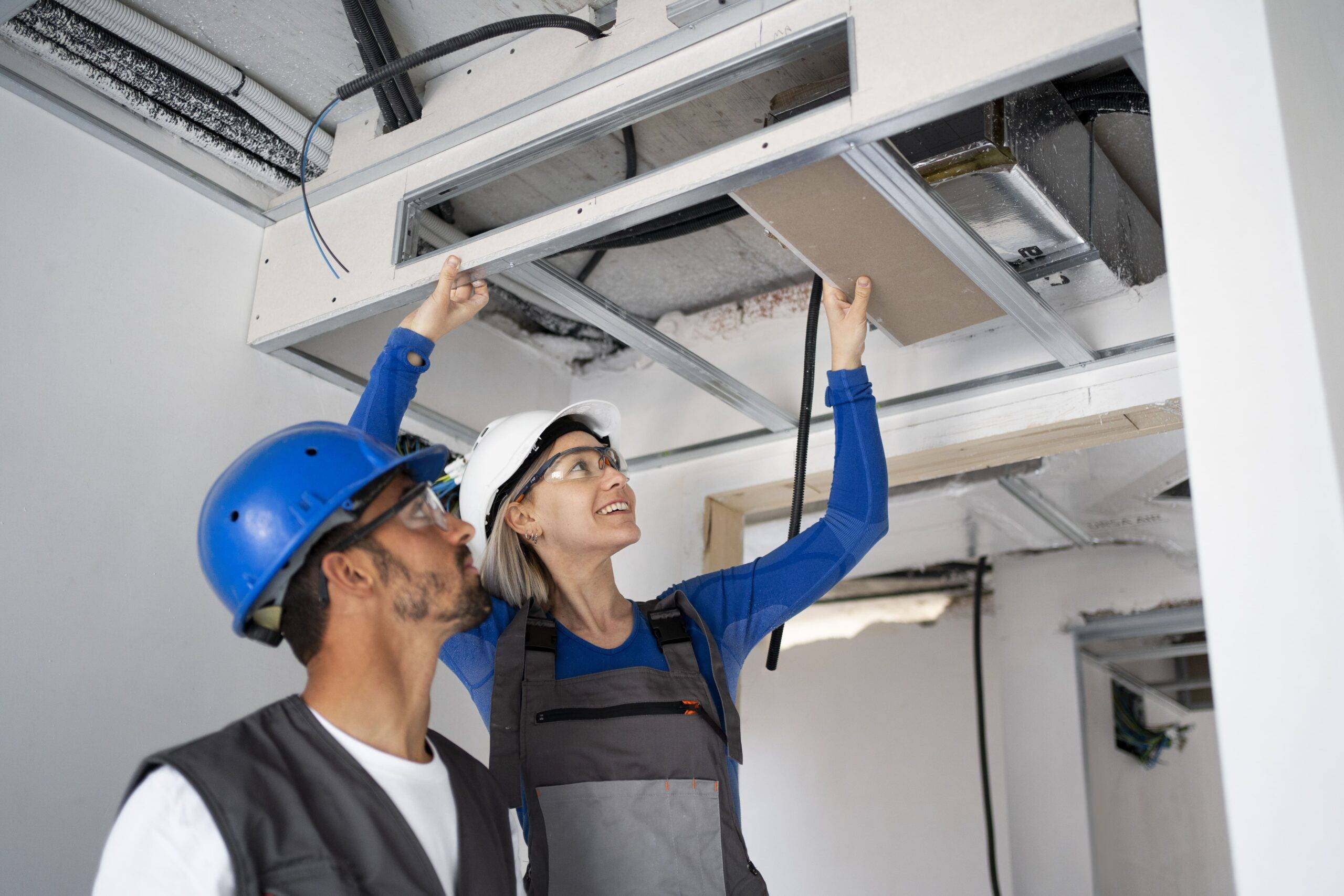Why Commercial Office Buildings Need Quarterly HVAC Checkups
In the fast-paced environment of commercial office buildings, it’s easy for HVAC maintenance to slip through the cracks. With pressing daily operations, tenant needs, and staff management at the forefront, preventive care of HVAC systems may not seem urgent—until something goes wrong. But here’s the truth: quarterly HVAC checkups are not just best practice—they are vital to the comfort, efficiency, and longevity of your workspace.
In this blog, we’ll explore why quarterly HVAC inspections are essential for commercial buildings, the benefits they provide, what these checkups involve, and how they impact productivity, energy consumption, and long-term savings.
A Simple Routine That Pays Off
Commercial buildings are powered by multiple systems working in sync—lighting, security, connectivity, and most importantly, climate control. HVAC (Heating, Ventilation, and Air Conditioning) systems are central to ensuring a comfortable and safe environment for employees, clients, and tenants. And like any complex machinery, they perform best when maintained regularly.
Quarterly HVAC checkups act as a proactive measure to prevent expensive breakdowns, energy wastage, and environmental discomfort. Regular check-ups help find small problems early, so they don’t turn into big ones later.
What Is Commercial HVAC Preventative Maintenance?
Commercial HVAC preventative maintenance refers to the scheduled service of your heating, ventilation, and air conditioning systems to ensure they are operating efficiently and safely. These checkups involve a comprehensive review of components, cleaning of system parts, replacement of worn-out items, and performance calibration.
Typically, each quarterly checkup includes:
- Replacing or cleaning air filters
- Checking thermostat settings and controls
- Inspecting refrigerant levels
- Lubricating moving parts
- Inspecting condensate drains
- Evaluating energy efficiency and airflow
- Examining belts, motors, and electrical connections
The goal is to make sure all parts work well and to avoid breakdowns in the future.
Why It Matters: The Business Case for Quarterly Checkups
Let’s break down the advantages of quarterly HVAC maintenance for commercial office buildings.
1. Improved Employee Comfort and Productivity
Workplace comfort directly impacts employee satisfaction and performance. Uncomfortable indoor environments—like uneven cooling or stale air—can make it harder for employees to focus, often leading to dissatisfaction and a dip in overall morale.
Fun fact: Studies from Harvard and Syracuse University show that better indoor air quality can boost cognitive function by up to 61%.
2. Energy Efficiency and Cost Savings
Dirty filters, clogged coils, and faulty parts make HVAC systems work harder than they need to. This increases energy consumption and inflates utility bills. Regular checkups help identify inefficiencies and keep systems running at peak performance, reducing monthly energy costs by up to 30%.
3. Longer Equipment Lifespan
Think of your HVAC system as you would your car—it needs timely servicing to run smoothly. Preventative maintenance significantly extends the life of your HVAC units by minimizing wear and tear. This helps avoid expensive part changes and keeps the system running smoothly.
4. Fewer Emergency Repairs
Breakdowns are stressful, especially when they happen during extreme weather or peak working hours. Scheduled quarterly visits allow technicians to detect and resolve small problems early, preventing surprise malfunctions.
5. Regulatory Compliance and Warranty Protection
Some HVAC manufacturers require proof of regular maintenance to honor warranty claims. Additionally, many commercial buildings are required to comply with indoor air quality and energy efficiency regulations. Quarterly checkups ensure you remain compliant and avoid legal issues.
6. Better Indoor Air Quality (IAQ)
Office buildings house multiple people in enclosed spaces. Without proper air filtration and ventilation, allergens, pollutants, and pathogens can accumulate—impacting respiratory health and increasing sick days. Timely servicing keeps the air clean and makes indoor spaces healthier.
Why Quarterly Checkups and Not Just Annual?
While annual servicing is better than none, quarterly maintenance ensures your HVAC systems are prepared for seasonal shifts.
Here’s how it breaks down:
- Spring: Focus on clearing allergens, inspecting filters, and preparing cooling systems for summer.
- Summer: Ensure cooling efficiency, check refrigerants, and assess system load capacity.
- Fall: Transition from cooling to heating—test heating components and clean furnace filters.
- Winter: Prevent freeze-ups, inspect ducts for heat loss, and test emergency heating options.
This frequency aligns HVAC performance with external temperature changes, ensuring your office environment is comfortable year-round.
What Happens During a Quarterly HVAC Visit?
You might be wondering—what exactly does a technician do during these visits?Here’s a typical checklist:
| Component | Action Taken |
|---|---|
| Air Filters | Replaced or cleaned |
| Coils | Cleaned to remove dust and debris |
| Thermostat | Calibrated for accurate readings |
| Ducts & Vents | Inspected for leaks or blockages |
| Electrical Connections | Tightened and tested |
| Refrigerant Levels | Checked and refilled if needed |
| Moving Parts | Lubricated to reduce friction |
| Safety Controls | Verified for proper function |
These tasks, though simple, prevent complex failures and ensure efficiency.
Choosing the Right HVAC Maintenance Service
Partnering with the right HVAC service provider is critical. Not every service provider handles commercial systems well, so keep these points in mind while choosing one
- Experience with commercial-grade HVAC systems
- Certified technicians (NATE or EPA certification preferred)
- Transparent maintenance plans and pricing
- Emergency response support
- Positive client testimonials and reviews
- · Regular reporting and documentation
A trustworthy HVAC partner will tailor their service plans to your building’s size, occupancy, and usage patterns.
Final Thoughts: It’s a Smart Investment
Think of quarterly HVAC maintenance as business insurance—preventing losses, maintaining stability, and protecting investments. Skipping these checkups may save you money today, but it risks expensive repairs and loss of comfort tomorrow.
In the long run, you’ll spend less on energy bills, avoid sudden disruptions, and keep employees happier and healthier. So, if you haven’t scheduled your next HVAC maintenance yet, now is the time.

